Steph W. from SEOPressor


...help you check your website and tell you exactly how to rank higher?


84
score %
SEO Score

Found us from search engine?
We rank high, you can too.
SEOPressor helps you to optimize your on-page SEO for higher & improved search ranking.
By vivian on December 7, 2016

These days, it really pays to be looking ahead – more than ever before. Technology and consumer trends such as user intent are changing so rapidly that a company which is only looking at now is going to already be behind by the time they bring a new product or service to market.
The companies which succeed are those who are looking ahead, six months or a year down the road, and attempting to predict the intersection between their product and future trends.
Well, perhaps it’s a cliche, but it’s hard to predict the future without understanding the past. Ideas and technology trends have an inertia of their own, and trends don’t appear out of nowhere. Looking ahead is difficult, and filled with uncertainty. However, having a strong grasp on the past at least makes it easier.
Let’s take a look at the evolution of search engines: the past, present, and future, with a lens specifically on user intent. Search engines are all about user intent – trying to predict it and trying to fulfill it in better ways. Understanding that intent will help suggest the future of search engines and, in turn, the future of SEO.
And with search engines now becoming part of the fabric of our daily lives, there’s no time like the present to dig into the history of web search.
It’s hard to pick an exact beginning point for The Internet, which makes it hard to pick a “first search engine.” Even in the 80s, there were various attempts to make it easier to search proto-Internet technologies such as Usenet or FidoNet.
However, the “first search engine” generally goes to Archie.

Archie pre-dates the World Wide Web and was focused on FTP (File Transfer Protocol) file-sharing sites.
It would regularly crawl publicly-available sites, and allow users to search the indexes it created. In this way, Archie set the basic paradigm for search engines still used today: Bot-based information crawling with a keyword search interface.
There’s even one instance of it still available today if you want to play with a piece of Internet history.
But Archie had some major drawbacks. The biggest is that its search engine was very, very dumb. It could only return results for exact-name matches for files. It had basically no regard for user intent. Either you knew the filename you were looking for, or you didn’t.
Still, the stage was set, and with the birth of the World Wide Web in the early 90s, the evolution of search engines would directly parallel the evolution of the Internet itself.
Between 1991 and 1994, there was a flurry of activity in search engines, with dozens of upgrades and competitors to Archie appearing on the scene.
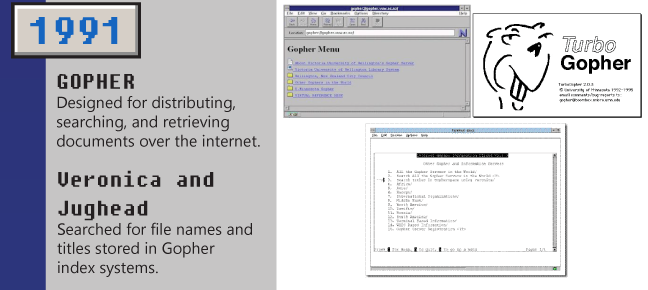
Most of them were fairly specific in nature, targeting early networks like Gopher, and didn’t last long.
These had names like Jughead and Veronica.
1994 saw the first generation of what we’d consider the “modern” search engine.

Being the year that brought WebCrawler, AltaVista, Infoseek, Lycos, and Yahoo.
WebCrawler was particularly notable in the early history of search engines as it was the first engine to scan entire webpages and allow users to do keyword-based searches on the indexed text.

Believe it or not, WebCrawler is also still around!
Search engines were starting to understand that they needed to be based around predicting user intent and catering to it. This led to another major milestone in 1997, with the invention of AskJeeves.

The first natural-language search engine backed up with a personified character of Jeeves who humanized the computerized element.
At the time, AskJeeves was something of a joke. In retrospect, it was downright prescient, but simply too ahead-of-its-time to work right. Jeeves is basically the common ancestor of Siri, Cortana, and all the other virtual assistants we see today.
But we’ll come back to virtual assistants a little later.
For most of the late-90s to early-00s, Yahoo ruled the roost. They borrowed the web crawling concept from WebCrawler while pairing it with a lot of other features aimed at adding utility for users such as a popular webmail system. By their height, they were actively buying up competitors like AltaVista to put more services under their umbrella.

“Yahoo!” became nearly synonymous with “web search.”
However, of course, a competitor was rising up that would soon dominate the search industry.

Google actually began as experiments in 1996 under the code name BackRub.
It would be several years before Google became prominent.

Google domain itself was registered in 1998.
The funny thing is, there’s no single key event that marks the rise of Google. Contrary to how some today see it, they didn’t burst onto the scene out of nowhere and immediately became dominant.
Google simply understood that user intent and user experience were everything. They set out to create a search engine and associated toolset, which did the same things their competition could, but better. Slowly but surely, they leeched users from Yahoo simply by providing the superior service.
By 2005, there were three main players in the search engine game: Yahoo, Microsoft’s MSN (which had been introduced in 2004), and Google.

This year is also notable for being the first year that the major search engines would collaborate towards improving search engine experience in general. They collectively created the “NoFollow” link attribute, specifically to cut down on link spam.
However, Google was winning, and by the end of the decade, Google had obtained a nearly-unassailable place at the top of the search engine pile. With nearly 2/3 of all web searches going through their servers, they had risen to dominate the industry while even pushing mighty Microsoft into second place.
Microsoft and Yahoo eventually formed a partnership in 2009.

The partnership has effectively combined their search engines, simply to hang onto their remaining market share.
Under Google’s stewardship, user experience became the single most important attribute for the evolution of search engines. Nearly every change to the engine was designed to make life easier for users, delivering better results while minimizing the effect of spammy advertising tactics. User intent and user experience became the prime focus.
Click Here To Download The Full Infographic (1900s)
Today, we have a search engine market which is –on one hand– remarkably stable, with Google ruling the roost and not likely to fall anytime soon. On the other, a flurry of new technology has arisen which is changing the nature of web searches themselves, and how users interact with the Internet.
The most obvious change is the rise of mobile devices. The “Year of Mobile” was predicted as far back as 2002, and attempts at PDAs go all the way back to the Apple Newton in 1993. It wasn’t until 2010-2012 that mobile devices truly exploded into use, with the popularity of the iPhone/iPad and the subsequent rise of Android.
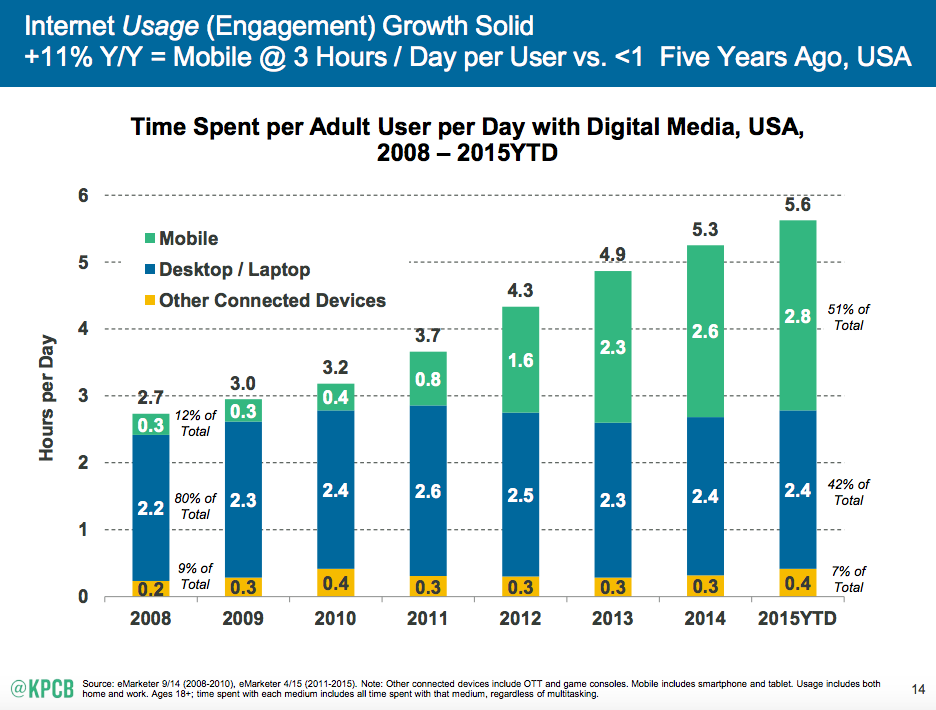
In 2015, mobile web usage officially grew larger than desktop-based use.
Suddenly, the Internet was everywhere. It wasn’t something done after hours, in one’s free time. It was rapidly integrated into everyday life. Pulling out a smartphone to look up a factoid became an expected part of daily business or study.
To compensate, search engines became intensely location-focused. Where the user was searching from suddenly became as important as what they were searching. User intent had to be derived not just from the keyword they entered, but the context of their real-life surroundings.
Likewise, there was a boom in location-based advertising to match. Local searches, aimed at providing nearby results, became the hot new trend. Now, local searches are arguably more commonly-used and more effective than local physical advertising.
That’s where we stand today. However, new technologies are already rising up to shake up the search engine market all over again:
As we noted, the idea of having an appealing personified web interface that accepted natural-language queries dates back to the 90s.
For that matter, the entire idea of “voice recognition” goes all the way back to 1952, when Bell Labs created “Audrey,” a computer capable of recognizing spoken numerals. IBM, Apple, and Dragon would add to the voice recognition pile over the decades.
It wasn’t until the 2010s before the technology became truly workable and “ready for prime time,” beginning with the introduction of Apple’s Siri in 2011. Much like in the early years of the web, we’ve now seen an explosion of AI Virtual Assistants, with half-dozen major competitors on the market and much more waiting in the wings.
Virtual Assistants aimed to take everything we’d previously seen in web search technologies and wrap them up in a single easily-accessed package: A voice interface which can take both the user’s location and user intent into consideration, aided by whatever other pieces of data they have stored about their user, and combine all of those into a single output that creates a wholly customized response to Internet queries.
Forget “one size fits all” web searching. The future of online searches is customization. And it’s catching on.
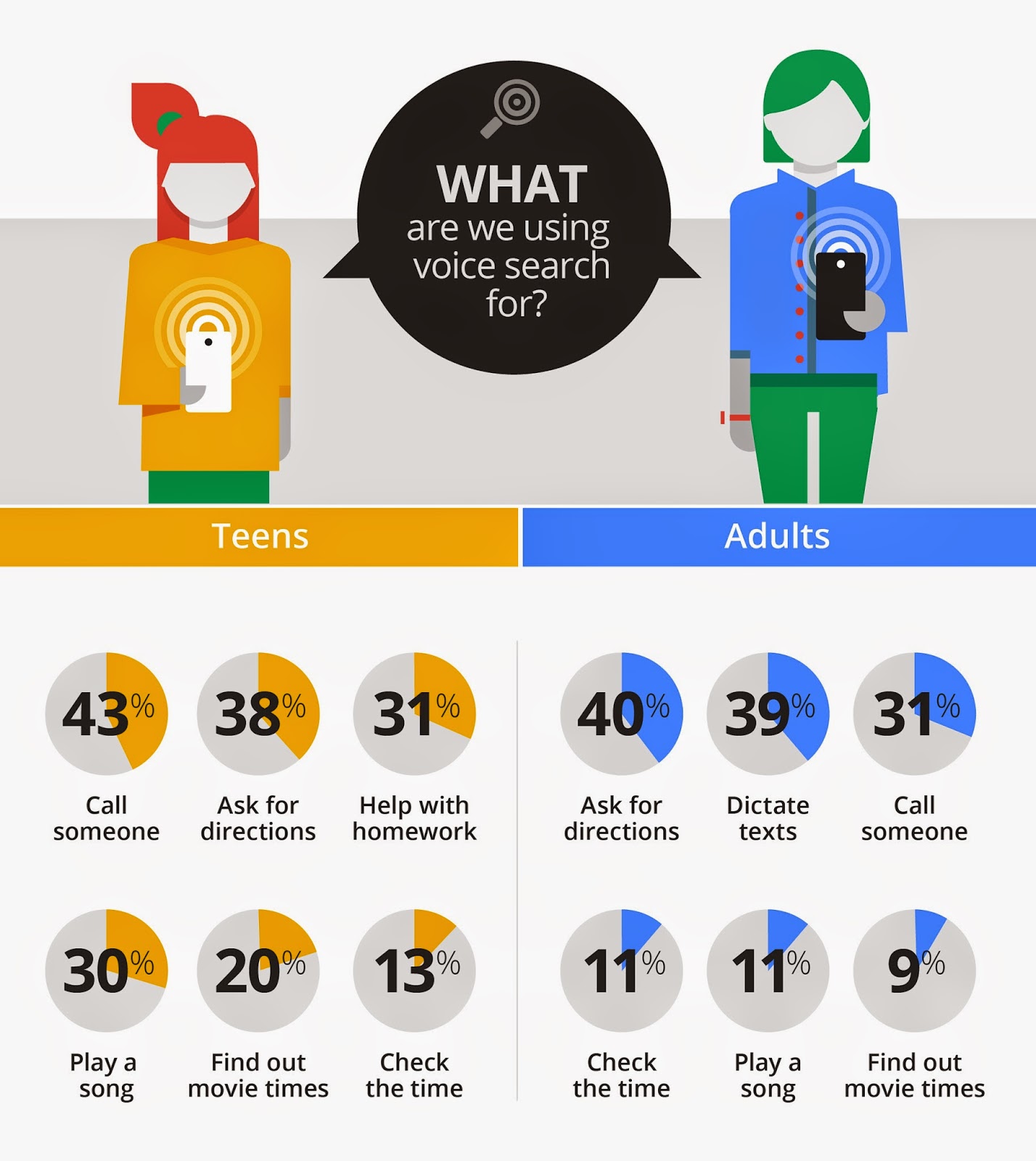
Even in 2014, more than 40% of adults and 55% of teens said in surveys that they talked to their computers at least once a day.
Since these systems are universally cloud-based, they become smarter with every interaction. As long as people are using them, they will become more effective.
So, where does this leave you?
One thing is clear if it hasn’t become so already: The old-style keyword-based search is nearly dead and becoming more outdated by the day.
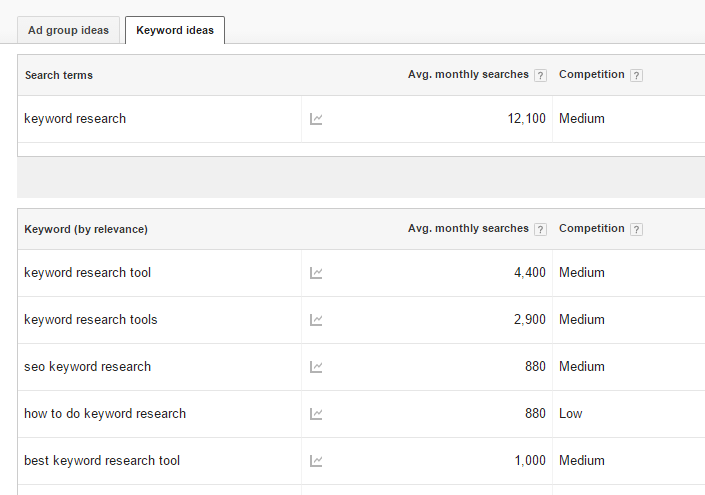
Even Search Engine Watch said that Google’s Keyword Planner tool has become more inaccurate.
Keywords are now only one of many factors which determine the results a user sees when they run a search. Simply targeting keywords isn’t enough. Factors such as the user’s location, circumstance, even time of day will also be taken into consideration.
Understanding user intent among your own audience is crucial. Good SEO will increasingly require having a strong knowledge of who your audience is, and what they’re doing while they’re running searches.
The more information you can gain about your audience, the better. Their needs and desires must be catered-to if your webpage is going to be deemed relevant enough to reach the top of their personalized search results.
This will likely take the form of micro-targeting. Forget targeting baskets of millions of users at once. Finding specific niches and targeting those as precisely as possible will be the key. In turn, that means understanding your own webpage, products, and usefulness well enough to know who is truly the best fit for your offerings.
Basically, because the search engines will continue to be focused on user intent, that means you must make user intent one of your highest priorities as well. Forget any 20th Century notions of “creating demand.” That’s now a secondary consideration for SEO, at most. Awareness-building will come through other outreach methods, such as social media or more traditional offline outlets.
For the foreseeable future, SEO will be about providing answers right now to the questions and problems a user is facing right now. To make sure you’re doing SEO the right way for better ranking, SEOPressor Connect is here to help you out.
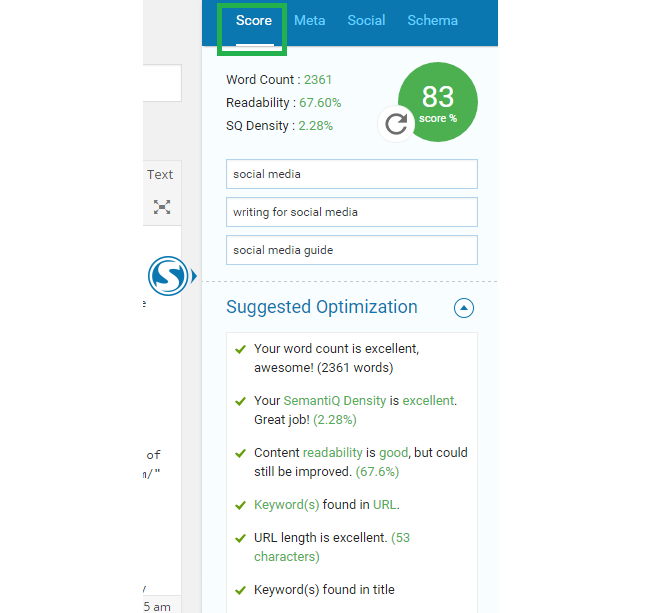
SEOPressor is like a checklist for us to analyze the steps that we’ve overlooked to improve our on-page SEO.
That’s what it will take to be noticed on search engines in the immediate future. But what about the years to come?
Finally, just for a bit of fun, let’s take a look a bit further ahead. This is all speculative, to be sure, but in a couple cases, we know exactly what technologies are upcoming.
First, you don’t need to be an oracle to realize that Virtual Assistants are virtually assured to keep growing in use and utility. The amount of money being pumped into AI, heuristics, and machine learning systems is enormous and growing every day.
Even companies which are only moderately interested in the consumer market are making Virtual Assistants and similar apps simply so they can crowd-source machine learning projects.
This means two things:
This will be the final nail in the keyword coffin, as they were always a shorthand to get around computers’ inability to understand natural language. Delivered content will be matched to queries in a much more precise and intelligent manner.
Specifically, because people are coming to rely on them for decision-making more and more. Just like how much executive-level B2B marketing often targets their secretaries instead, “Virtual Assistant Optimization” – VAO – could easily be the next buzzword in content marketing.
If you really want to be ahead of the curve, assign some people to start studying how VAs work and their decision-making process. They will be the next gateway to understanding users and user intent. Almost no one in marketing is doing this at the moment, so the possibilities for ground-breaking revelations are very real.
And what’s beyond that? Augmented Reality.
Virtual Reality will almost certainly be a niche fad, with limited marketing potential because it requires users be tied down to a single room while wearing goggles that block out the outside world. At best, that gets you TV-style adverts or product placement.
But Augmented Reality will almost certainly be a reality in 5-10 years. Maybe even sooner. This has the potential to be a paradigm-shifter that eclipses even the birth of the Internet. AR can actually bridge the physical and virtual worlds, overlaying one on top of the other. The device and everyday experience will be linked.
The marketing potential here is enormous. Pop-up notifications of daily specials as someone walks by a bar. Walking directions powered by virtual-assistant location lookups. Queries for sale prices while looking at items in-shops.
Whatever brands can predict the uses of AR and have their marketing ready will truly be riding the next wave.
Phew! So, what do you think? What does the future of online marketing hold, and how will you be trying to interpret user intent as tech continues to advance? Let us know!
Click Here To Download The Full Infographic (2000s)
Related Posts:
Updated: 17 December 2025


Save thousands of dollars (it’s 100x cheaper)

Zero risk of Google penalty (it’s Google-approved)

Boost your rankings (proven by case studies)
Rank High With This Link Strategy
Precise, Simplified, Fast Internal Linking.
